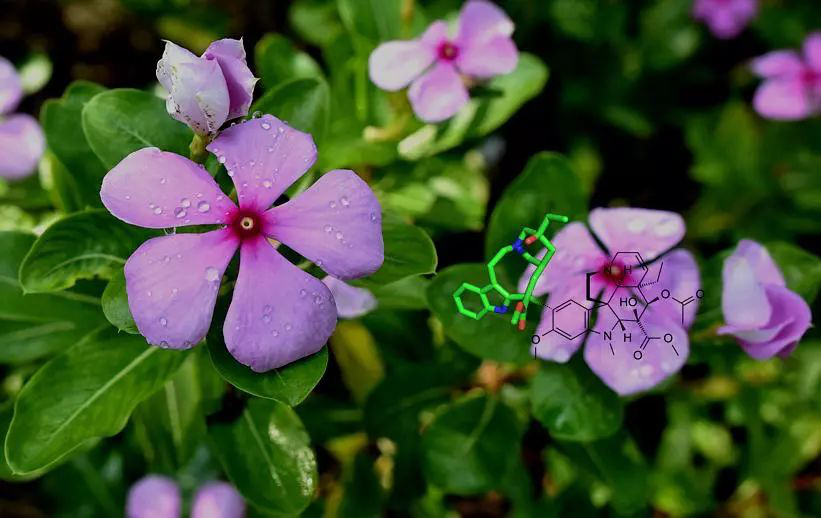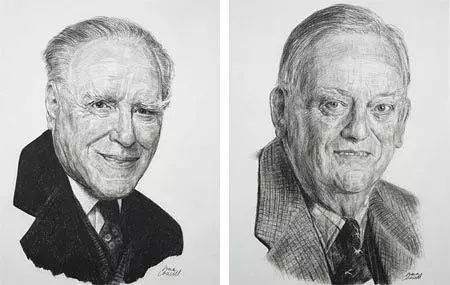Vincristine: Another "medicine" not mentioned in "God of Medicine"
The movie "I am not a drug god" is on fire, let everyone know about an anti-cancer drug Gleevec. Gleevec can treat leukemia, but the high price is frightening. The film has caused unprecedented attention in the whole society.

In fact, in the history of fighting leukemia, there is a drug that is greater than Gleevec, that is, "Vincristine." Usually, the patient will first receive intravenous chemotherapy with vincristine. If the recovery is good, the doctor will recommend the targeted drug Gleevec. Therefore, Gleevec is a bit like an additional oral medication, and the more important drug, vincristine, has been neglected because of its relatively cheap price. From the perspective of medical importance or popular science cognition, it is necessary to introduce to everyone to know about vincristine.
Vincristine is an alkaloid extracted from periwinkle, and its discovery is an accident. Originally produced in Madagascar, periwinkle is a small flower of the oleander family, available in white and pink. Around 1750, the famous botanist Linnai discovered and named the periwinkle flower. Because of its beautiful colors and long seasons, it was introduced to the world by horticulturists and developed a variety of herbal cultures. In the United Kingdom, India, China, Mexico and other places, the traditional knowledge of periwinkle is used to treat diabetes, dysentery and other diseases.

Chemical structure of periwinkle and vincristine
Although vinca is poisonous, it is generally not a problem for patients who are terminally ill. Especially before insulin was invented, many diabetic patients had almost no cure, and dead horses were alive. Changchun flowers and leaves are popular among many folks for making tea, and there is such a culture all over the world.
Canada doctor Robert Noble is a medical scientist who studies diabetes. His brother Clark Noble (who made a great contribution to the discovery of insulin) heard that "Jamaica people used vinca as a tea to treat diabetes," and told Robert the news and sent him some samples. Like most pharmacists, Robert also gets news from folk medicine, then scientifically confirms it, then separates out effective compounds and develops new drugs.
By injecting the periwinkle extract into the blood of mice and rabbits, they found that periwinkle did not actually lower blood glucose levels. In other words, periwinkle has no therapeutic effect on diabetes at all. However, the magic happened. The attentive experimenter found that the injection of sterilized periwinkle extract caused liver and kidney abscesses in mice. Since there is no bacterial infection, how can a mouse have an abscess? Further research found that the original periwinkle extract destroyed the immune system of mice, and further studies found that the periwinkle extract directly destroyed the hematopoietic cells of the spinal cord, which led to a decrease in the ability of the blood to be responsible for immunity.
"The ingredients in periwinkle can kill white blood cells." The keen Robert quickly realized this important discovery. Although the periwinkle extract cannot treat diabetes, it is likely to have a therapeutic effect on leukemia. Now we know that leukemia is caused by a special cause of cancer, abnormal bone marrow, causing abnormal white blood cell proliferation.

Robert Noble (Right)and Charles Beer(Left).
After keenly aware of the potential effect of periwinkle on leukemia, the keen Robert invited another chemist, Charles Beer, to join in and separate the special ingredients from the periwinkle. In 1958 they eventually obtained an active alkaloid, which was named Vinblastine (vinblastine). At the same time, Robert and Beer were studying the periwinkle flower and Eli Lilly, a famous American pharmaceutical company. Later, the two teams cooperated to develop and successfully launched the anti-cancer drug Vincristine, which we are now familiar with. The anticancer effect of vincristine is better than that of vinblastine. It is now the first choice chemotherapy for leukemia, especially for acute lymphocytic leukemia, Hodgkin's lymphoma and other cancers.
The mechanism of action of vincristine is that it can attach to microtubules and inhibit the mitosis process. Many cancers are caused by uncontrolled cell division and high-speed reproduction, so vincristine is widely used in chemotherapy to treat cancer. The side effects of vincristine are quite large, the most obvious being hair loss, constipation and walking disorders, and headaches. But in order to live a few more years, these side effects are nothing. My father is a leukemia patient, so I have a special affection for this "ordinary" florets. My father has been injecting vincristine several times, and the two gods have lived for two years. Leukemia patients will maliciously attack normal tissues after rising white blood cells, so they will have generalized pain, such as ants, especially in joints. My father was not very useful when he was finally dying. In order to return to Dali's hometown, he took a little bit of vincristine to stop the pain and finally died decently at home.
Therefore, I have a strong motivation, explosive emotions and irresistible sense of responsibility in writing this article. Although periwinkle is now a common plant that can be seen everywhere, you may not know about vincristine, and you may not know the remarkable contribution of this unique plant in Africa. Periwinkle is the natural elf that God has given us. It is the most beautiful flower in the world.

The biosynthesis process of vinblastine and vincristine (via science)
Once vinca alkaloids were discovered, they quickly entered the market and became a hot star anticancer drug. However, the content of vincristine in the periwinkle plant is extremely low, and almost 500 kg of dried leaves can extract 1 g of vinblastine. In the early days of research and development, the price of vincristine was also astonishingly high, worth millions of dollars per kilogram.
Scientists have been working hard to get anticancer drugs more quickly and efficiently. The first is whether it can be mass produced through simulated biosynthesis? This has always been a huge problem, and scientists have been exploring research for more than 60 years. In 2016, a Japanese research team analyzed the synthesis, transport and regulation of vinblastine in leaves (PNAS 2016), and the process was very complicated. Recently, Science issued an article that found two key enzymes and functional genes that control the synthesis of vinca, and further understanding of this anti-cancer drug in nature.
(Source: Science Network Blog Author Liu Guangyu, Researcher of Xishuangbanna Tropical Botanical Garden, Chinese Academy of Sciences Copyright belongs to the original author Thank you)
Reprinted from the "Chemical Life" public number

